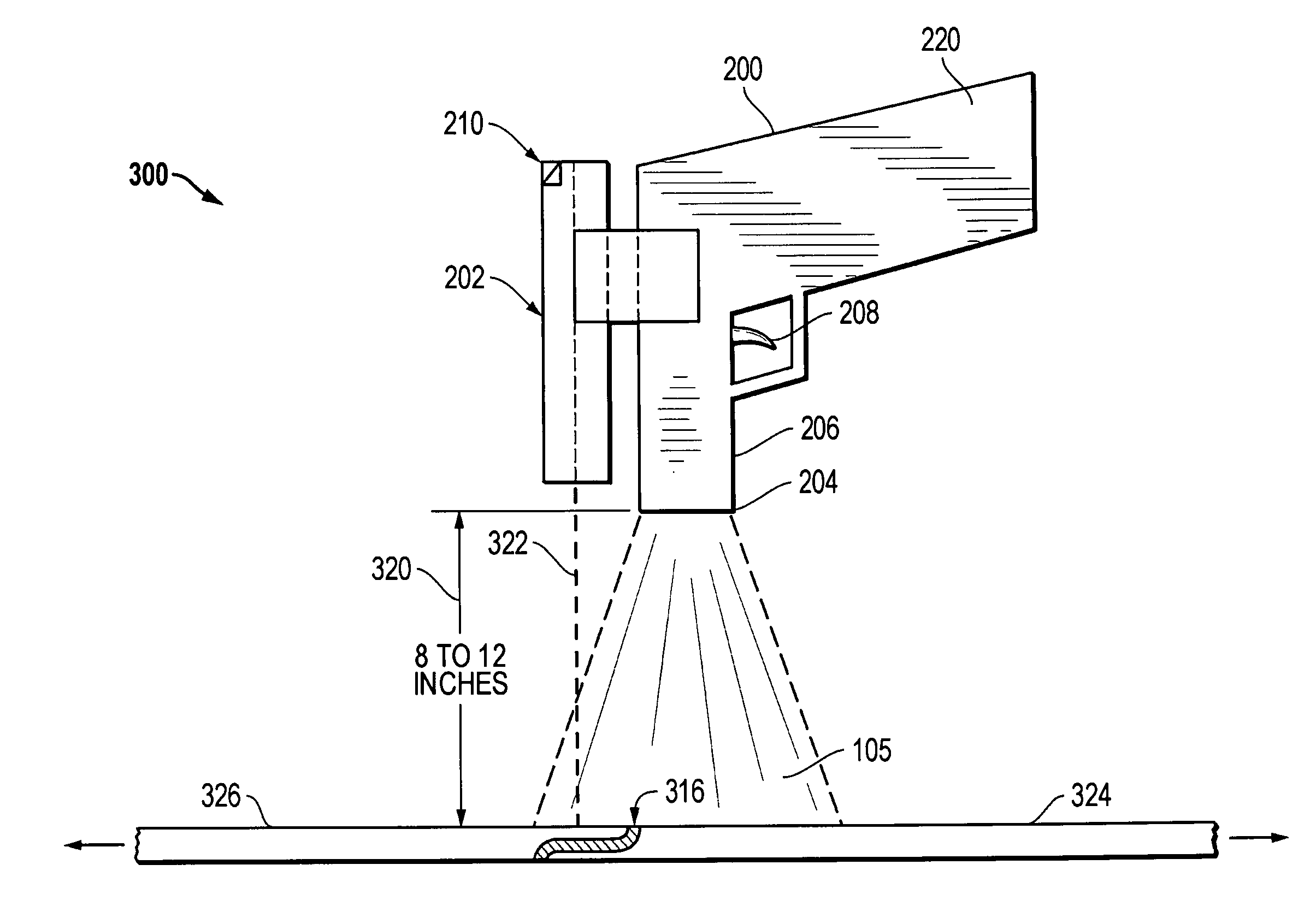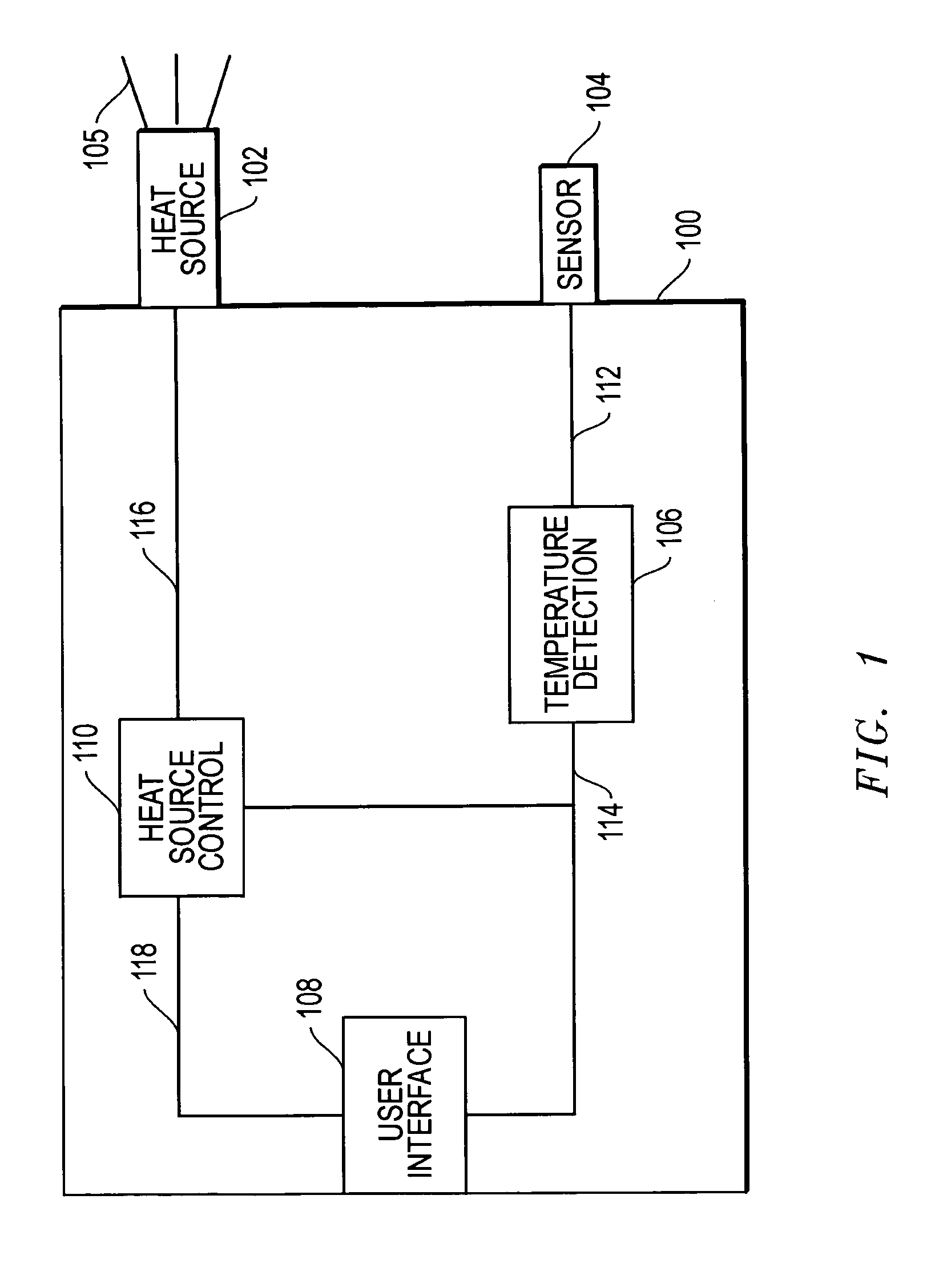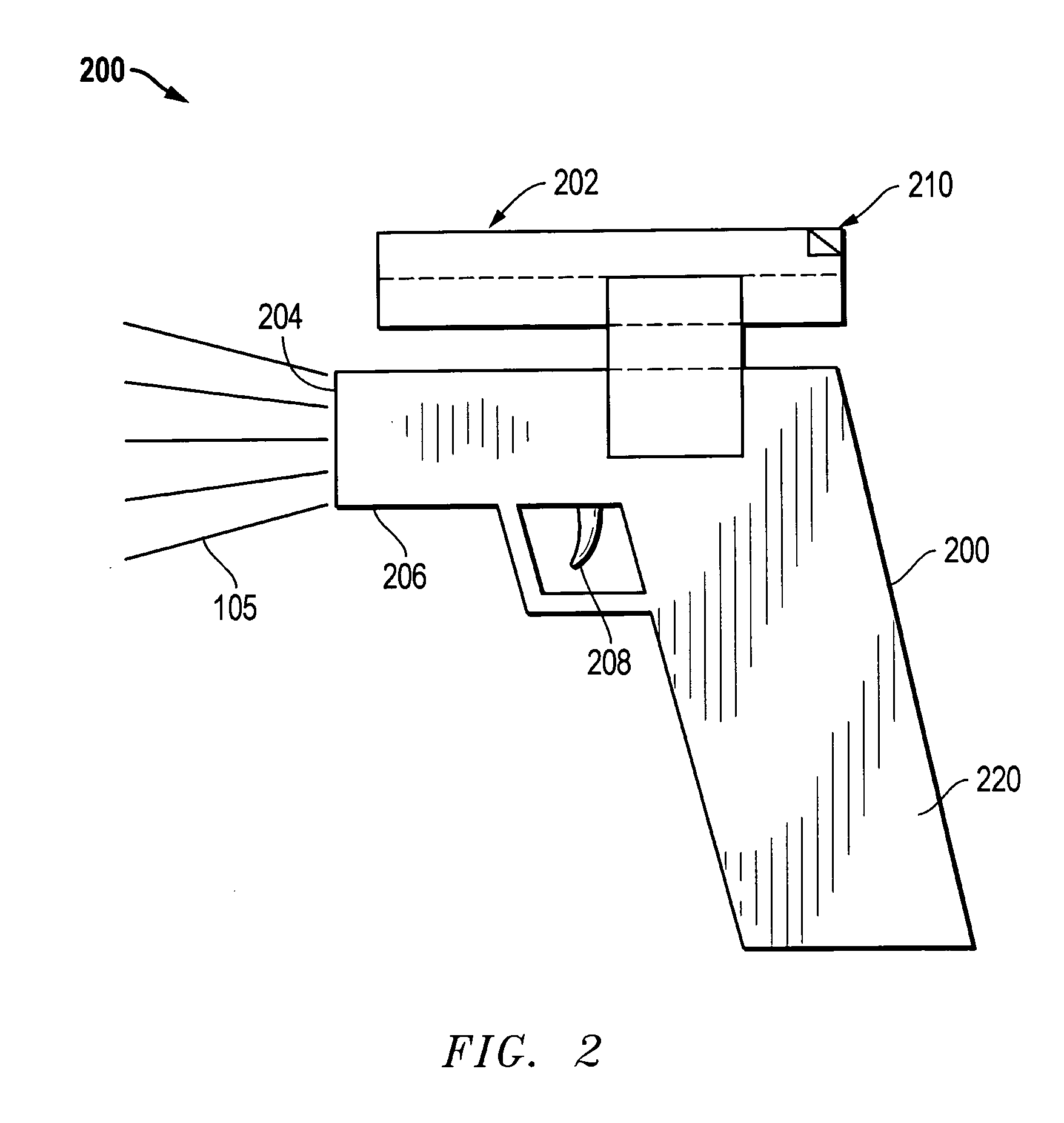Methods and systems for debonding substrates
a technology of debonding substrates and methods, applied in the field of bonded substrate materials, can solve the problems of inaccessible effective removal tools, collateral damage to the surrounding structure of the aircraft, damage to the parent material of the substrate, etc., and achieve the effect of reducing or substantially eliminating temperature level errors and precise control of the temperature of the substra
- Summary
- Abstract
- Description
- Claims
- Application Information
AI Technical Summary
Benefits of technology
Problems solved by technology
Method used
Image
Examples
Embodiment Construction
[0026]FIG. 1 shows a block diagram of a substrate heating system 100 according to one exemplary embodiment of the disclosed methods and systems that may be implemented, for example, to separate two or more substrates bonded by bonding material. As shown, system 100 includes a heat source 102 configured to emit heat 105 (e.g., radiant or convective heat), that is controlled by a heat source control 110 based at least partially on temperature information provided by temperature detector 106 and thermal sensor 104. System 100 also includes a user interface 108 that may be present, for example, to allow a user to input control information to a heat source control 110 and / or for display of heating system operation information to a user.
[0027] Still referring to FIG. 1, heat source 102 may be any one or more components suitable for remotely applying heat (e.g., radiant or convective heat) to a substrate, i.e., without making physical contact with the substrate. Examples of suitable remot...
PUM
| Property | Measurement | Unit |
|---|---|---|
| temperatures | aaaaa | aaaaa |
| distance | aaaaa | aaaaa |
| temperature | aaaaa | aaaaa |
Abstract
Description
Claims
Application Information
 Login to View More
Login to View More - R&D
- Intellectual Property
- Life Sciences
- Materials
- Tech Scout
- Unparalleled Data Quality
- Higher Quality Content
- 60% Fewer Hallucinations
Browse by: Latest US Patents, China's latest patents, Technical Efficacy Thesaurus, Application Domain, Technology Topic, Popular Technical Reports.
© 2025 PatSnap. All rights reserved.Legal|Privacy policy|Modern Slavery Act Transparency Statement|Sitemap|About US| Contact US: help@patsnap.com



